In Ranthambore, I Came for the Tigers — But It Was a 1000-Year-Old Fort That Stole My Heart
The dust swirled around my jeep as we bumped along the rugged path, the air thick with the scent of dry leaves and the promise of the wild. I’d come to Ranthambore for its famed tigers, of course, drawn by the allure of spotting the majestic creatures in their natural habitat. But as the imposing ramparts of Ranthambore Fort gradually loomed atop the hill, I felt a different kind of pull—a whisper from the past, an invitation to explore more than just the jungle.
The call of the wild
Like most people who find their way to Ranthambore, I arrived with visions of orange and black stripes slinking through golden grass. My abode for the stay was the spectacular Bookmark Resorts Jogi Mahal, a boutique hotel hideaway tucked close to the gates of the national park.
The moment I stepped into its stone-clad cottages surrounded by trees and birdsong, I knew this wouldn’t be just another rushed weekend escape. The staff greeted me with a warmth that didn’t feel rehearsed, and a glass of local drink instantly revived me after the hot drive from Jaipur.
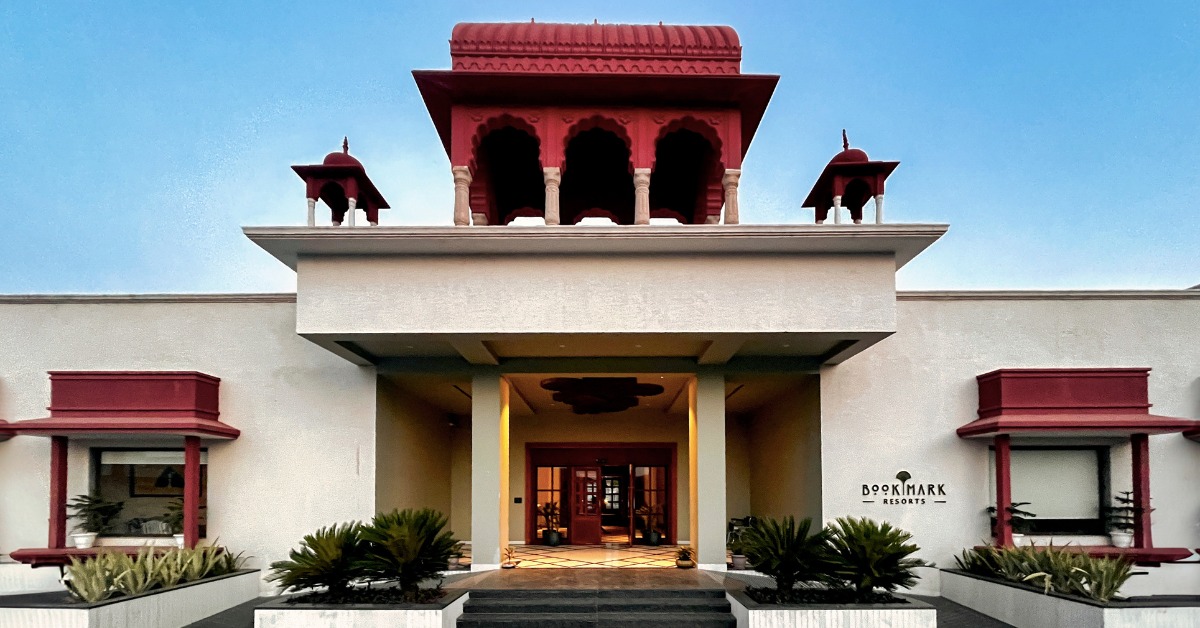 My base in Ranthambore: Bookmark Resorts Jogi Mahal, a peaceful boutique stay nestled near the park, where birdsong and warmth welcomed me in.
My base in Ranthambore: Bookmark Resorts Jogi Mahal, a peaceful boutique stay nestled near the park, where birdsong and warmth welcomed me in.
That evening, I sat on the deck of my cottage, the air alive with the chirping of crickets and the distant calls of night birds. A primal and exciting thrill coursed through me as I wondered if I would be lucky enough to spot the elusive tiger.
How would I cope with the sweltering heat and the early morning wake-up calls?
My heart raced, and my pulse quickened with the mere thought of witnessing such raw power in the wild and open. Watching a documentary on the legendary Tigress Queen of Ranthambore, Machli, only intensified the anticipation.
Later, over dinner, I sat with the resort’s naturalist to plan the next two days of safaris. As we swapped tiger tales and trail maps, he paused, leaned back, and asked casually, “Have you been to the fort yet? Some say it watches over the jungle like the original guardian.”
The smile that followed hinted that my Ranthambore experience wouldn’t be complete without venturing beyond the pursuit of wildlife. Intrigued, I added a visit to the ancient citadel to my itinerary, little knowing the profound connection I would feel to this historical and spiritual heart of Ranthambore.
Climbing into the past
That morning, I surprised myself. I altered my itinerary, postponing the safari and deciding to begin the day with a climb to Ranthambore Fort.
As I arrived at the base of the fort, the sun was still mellow, casting a soft glow on the Aravalli hills. The air was cooler than I expected, touched by the forest dew. The path ahead, with stone steps winding upward through ancient gates, looked less like a tourist trail and more like an entry into time itself.
The climb was steep in parts, slow in others, but never dull. With each turn, the forest below opened up in grander sweeps. I paused often, not from fatigue but from awe. By the time I reached the top, the jungle had fallen into a soft hush behind me, and in front of me lay the vast sprawl of Ranthambore Fort with its sandstone ramparts, weathered but still proud.
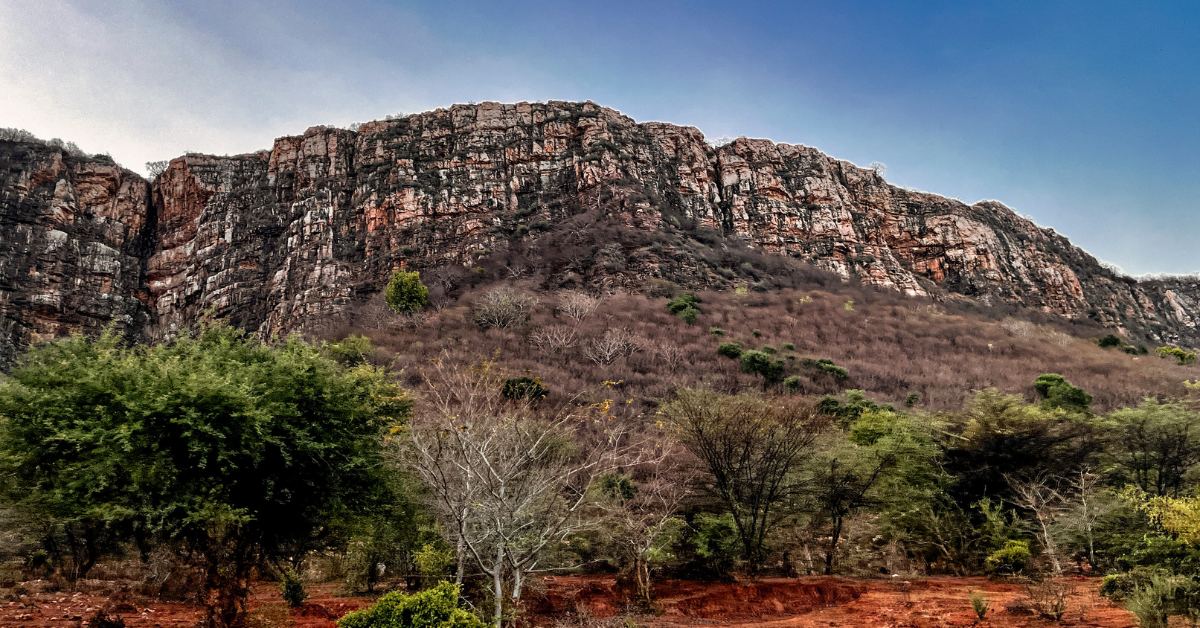 Ranthambore Fort rises from the rugged Aravalli hills—its red cliffs whispering centuries of resistance, devotion, and royal ambition.
Ranthambore Fort rises from the rugged Aravalli hills—its red cliffs whispering centuries of resistance, devotion, and royal ambition.
My guide for the day, Imtiyaz, a local who had grown up in the shadow of the fort, carried stories as naturally as he did his water bottle. “Built by the Chauhan kings around the 10th century,” he said, as we passed through the towering arches, “this fort has seen everything from sieges and dynasties to deaths and miracles.”
We walked through a maze of broken rooms, old granaries, and ancient reservoirs. The stone under my feet felt charged as if it remembered the rhythm of royal processions, war drums, and temple bells. “Hammir Dev Chauhan ruled from here,” Imtiyaz told me. “He fought Alauddin Khilji’s army till the very end. According to legend, his queen committed Jauhar (jumping into a fire) right here, in these ruins, to escape capture, and his unmarried daughter in the reservoir.” His story narration was beautiful, taking me back in time, and I could feel goosebumps all over my body.
After a long walk and many stories, we reached the top, and from there, we could see the panoramic views of the surrounding landscape. The view was staggering: the green expanse of Ranthambore National Park and the shimmering waters of Padam Talao. It was easy to see why this stronghold was so coveted by rulers throughout history.
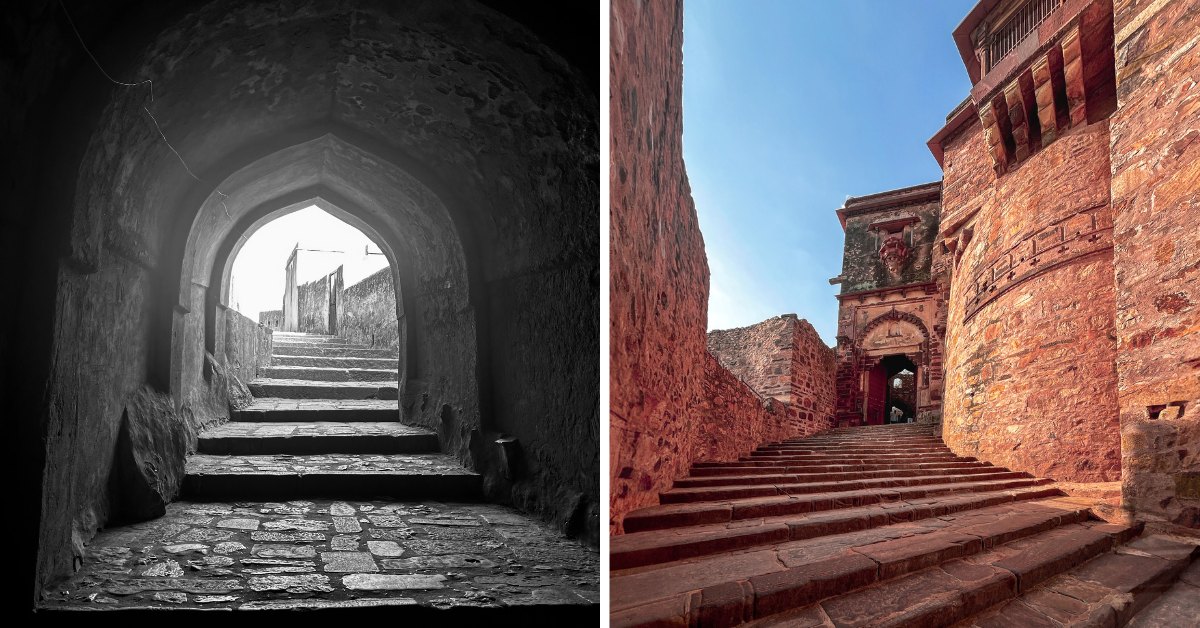 Weathered stone steps and shadowy arches welcome you into the fort’s embrace, where every turn carries echoes of the past.
Weathered stone steps and shadowy arches welcome you into the fort’s embrace, where every turn carries echoes of the past.
The weathered walls, punctuated by massive gates like Hathi Pol and Ganesh Pol, bore the marks of time and countless sieges. As I wandered through the crumbling structures, imagining the armies that once marched through these very gateways, I felt a tangible connection to Rajasthan’s rich and often turbulent past. The architecture, a fascinating mix of Rajput and Mughal styles, spoke volumes about the different eras and influences that had shaped this formidable citadel.
For a moment, I stood still, silenced by the scale of it all. I had come to Ranthambore looking for something wild. I didn’t know it would begin with stone.
Trinetra Ganesh Temple: Devotion carved in stone
High atop the fort, nestled within a quiet courtyard, we reached the Trinetra Ganesh Temple — a small shrine that exuded an almost tangible aura of faith. I had heard whispers of its legend even before I began the climb: that during a siege in 1299 by Alauddin Khilji’s forces, King Hammir Dev Chauhan, a devout follower of Lord Ganesh, had a dream. In it, Ganesh promised that his troubles would be over by dawn. The next morning, a self-manifested idol of Ganesh with three eyes (Trinetra) was discovered within the fort. Soon after, the siege inexplicably lifted. The idol remained, and so did the belief.
Inside the sanctum, the air felt cool and still. The Trinetra idol, flanked by his consorts Riddhi and Siddhi and sons Shubh and Labh, exuded a quiet serenity. It is said to be one of the few temples in the world that depicts Lord Ganesh in this complete familial form.
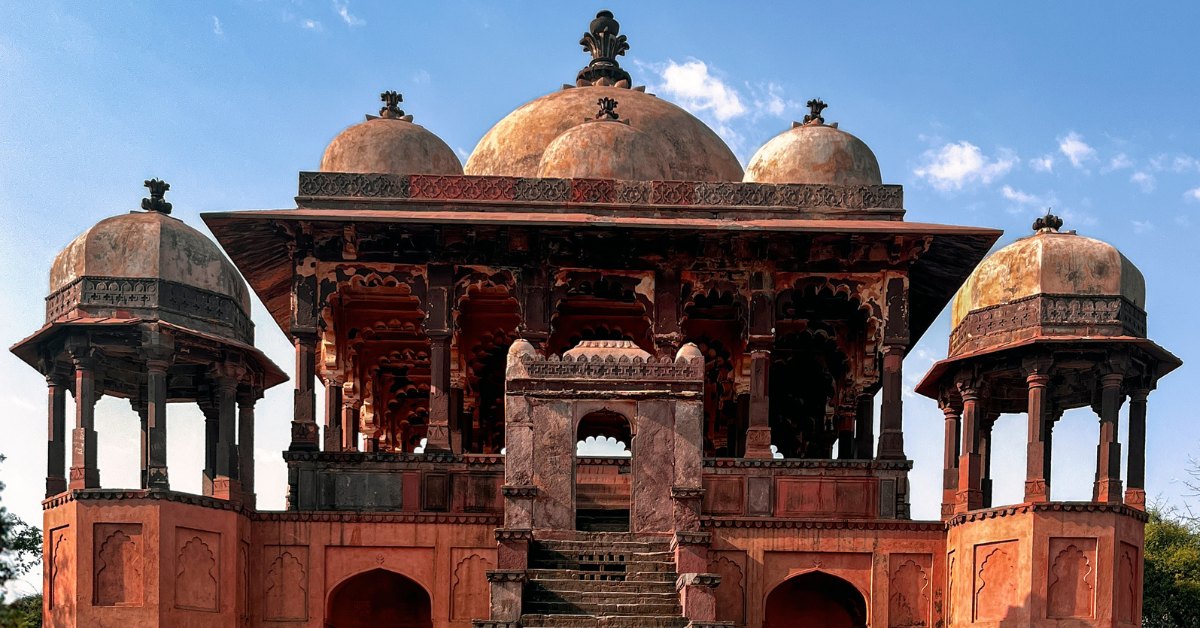 The Battis Khamba Chhatri — built to honour King Hammir’s 32-year reign — stands as a haunting memorial to Ranthambore’s heroic and tragic past.
The Battis Khamba Chhatri — built to honour King Hammir’s 32-year reign — stands as a haunting memorial to Ranthambore’s heroic and tragic past.
As we watched a priest sort through a small pile of letters near the deity’s feet, Imtiyaz leaned in and said, “People from all over India send their first wedding invitations here. We even have a dedicated postbox for Lord Ganesh.” He smiled and added, “And yes, the postman does deliver it.”
There was something profoundly moving about that. In a world of fleeting rituals, here was a practice rooted in belief, blessing, and the quiet hope that beginnings like marriages deserve divine acknowledgement.
Standing there, I thought the rugged stone walls of the fort, which had once echoed with the cries of war and conquest, now stood silent witness to centuries of devotion. It struck me then that Ranthambore Fort wasn’t just a historical monument — it was a breathing, believing space. A place where faith had outlasted fire.
A place that stays with you
As I descended from the fort, the jungle began to rise again in the distance. But something had shifted. I had come to Ranthambore hoping to lock eyes with a tiger, to chase that fleeting thrill of the wild, which I did during my safari. And yet, it was the fort, not the forest, that had captured me.
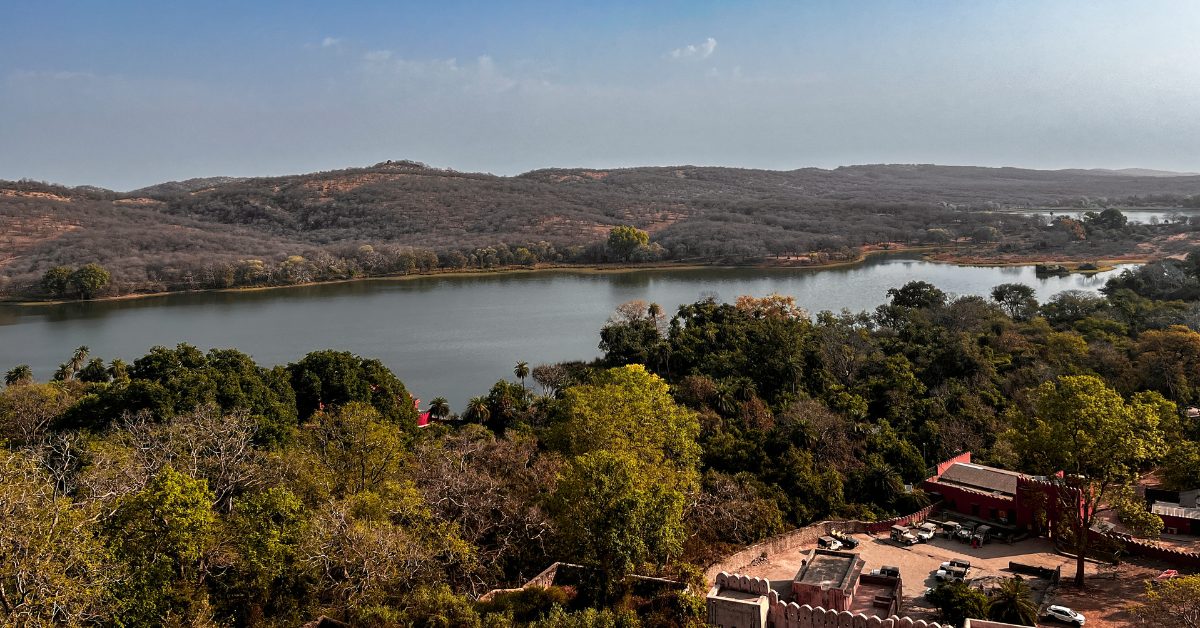 From the fort’s summit, Padam Talao sparkles below — a mirror to the wild and a reminder of how history and nature intertwine in Ranthambore.
From the fort’s summit, Padam Talao sparkles below — a mirror to the wild and a reminder of how history and nature intertwine in Ranthambore.
Back at the resort, the calm returned. Sitting on my cottage verandah with the forest humming gently around me, I realised the fort had given me something the jungle hadn’t—a sense of time paused, of faith held steady across centuries.
Over dinner, a staff member smiled and said, “The fort watches everything. Even the tigers know it.” And I believed him. In Ranthambore, the wild is not just in the jungle. It’s in the legends whispered through stone, in temples that receive wedding invitations by post, and in customs and beliefs passed down through generations. I came looking for a predator, but I found something else: a stillness, a strength, a sense of wonder I hadn’t expected. And that, I realised, is the real magic of Ranthambore.
Edited by Leila Badyari
News